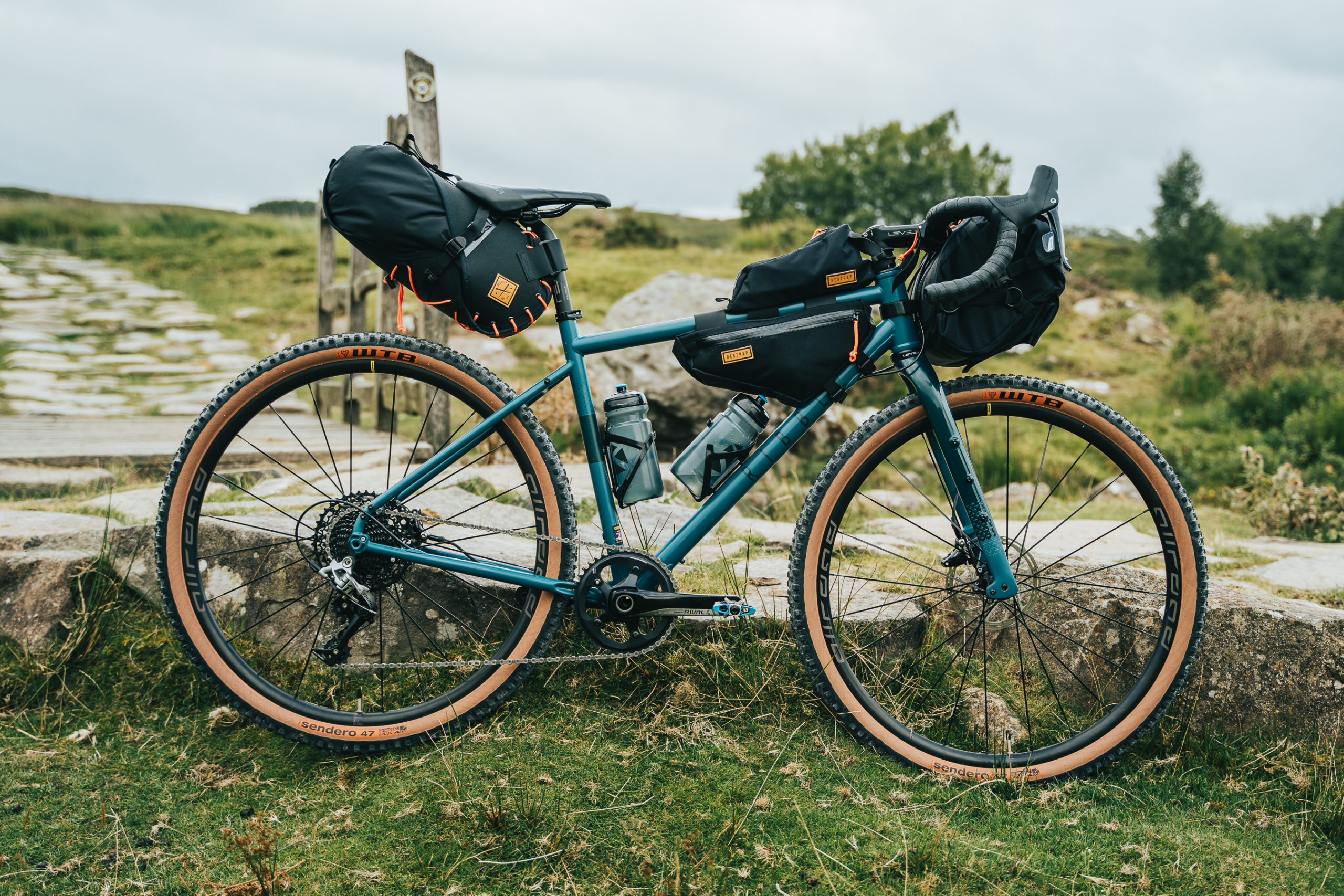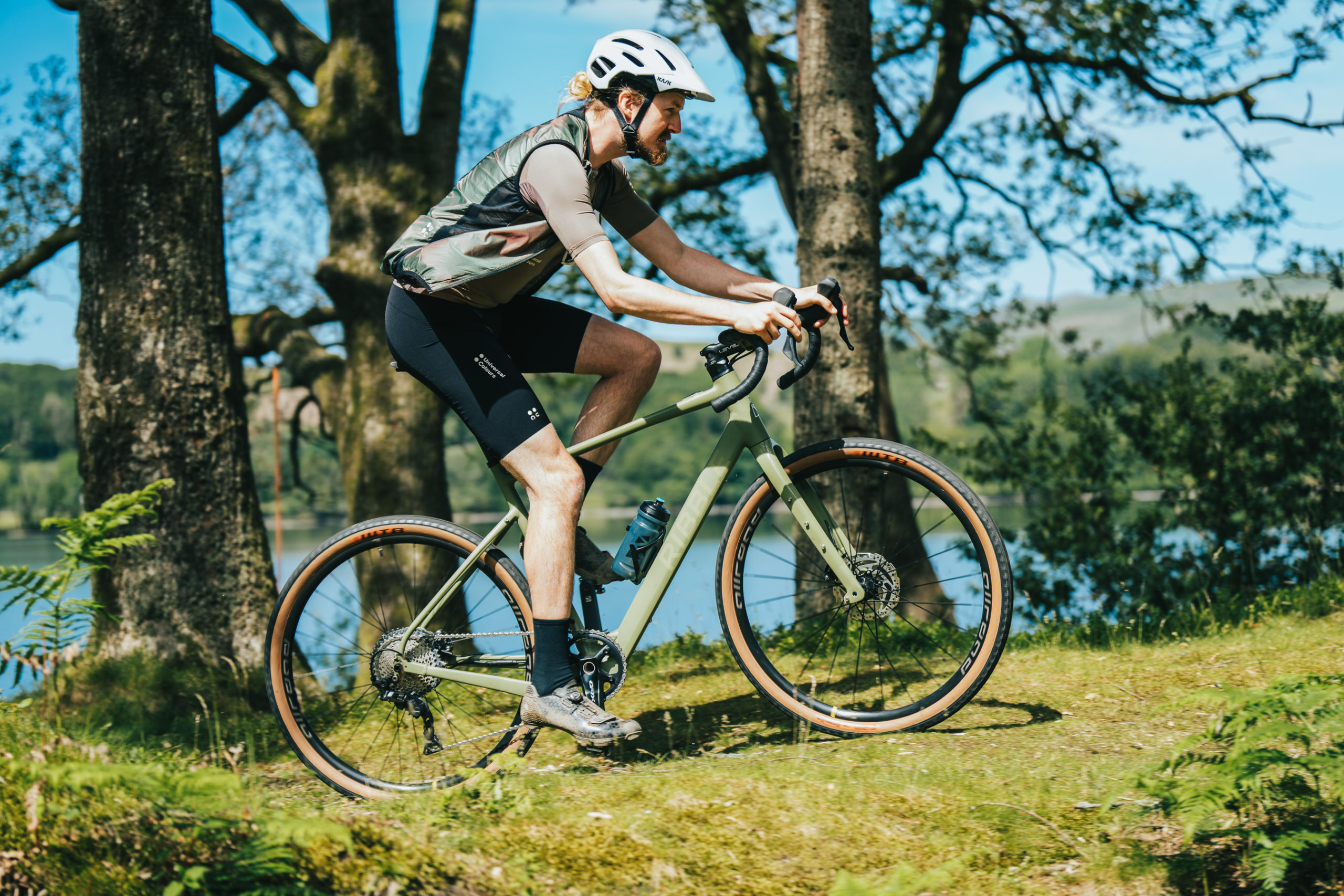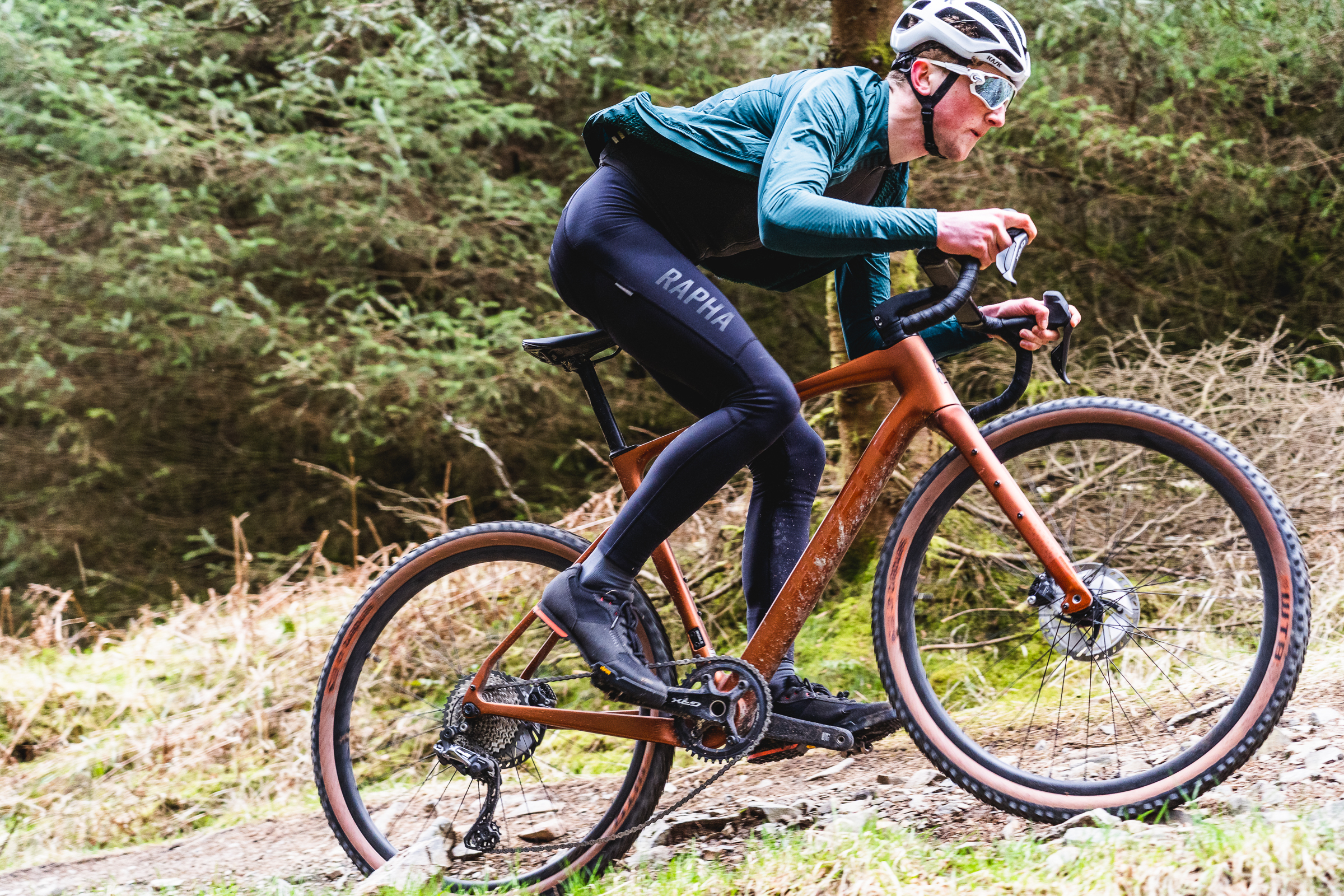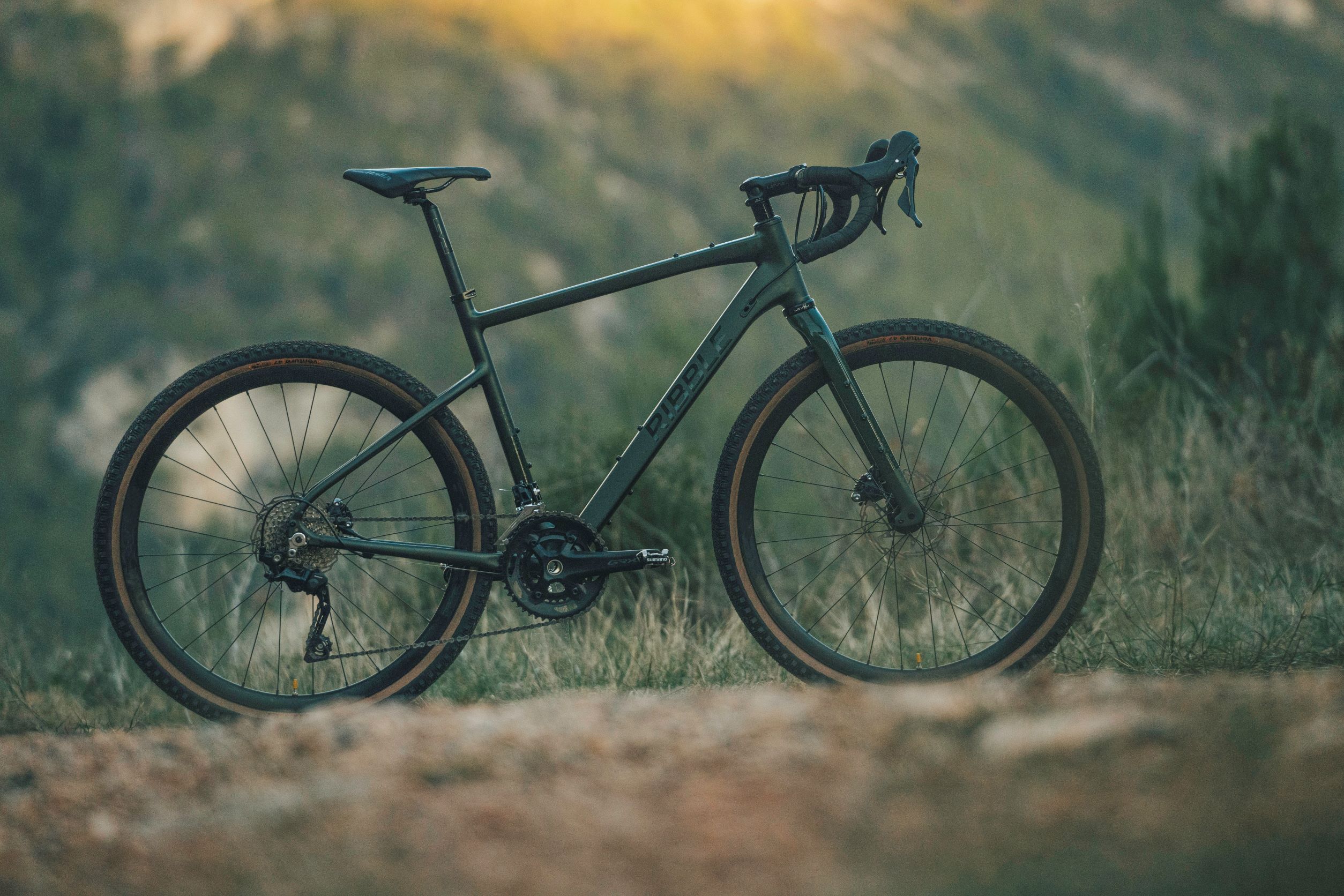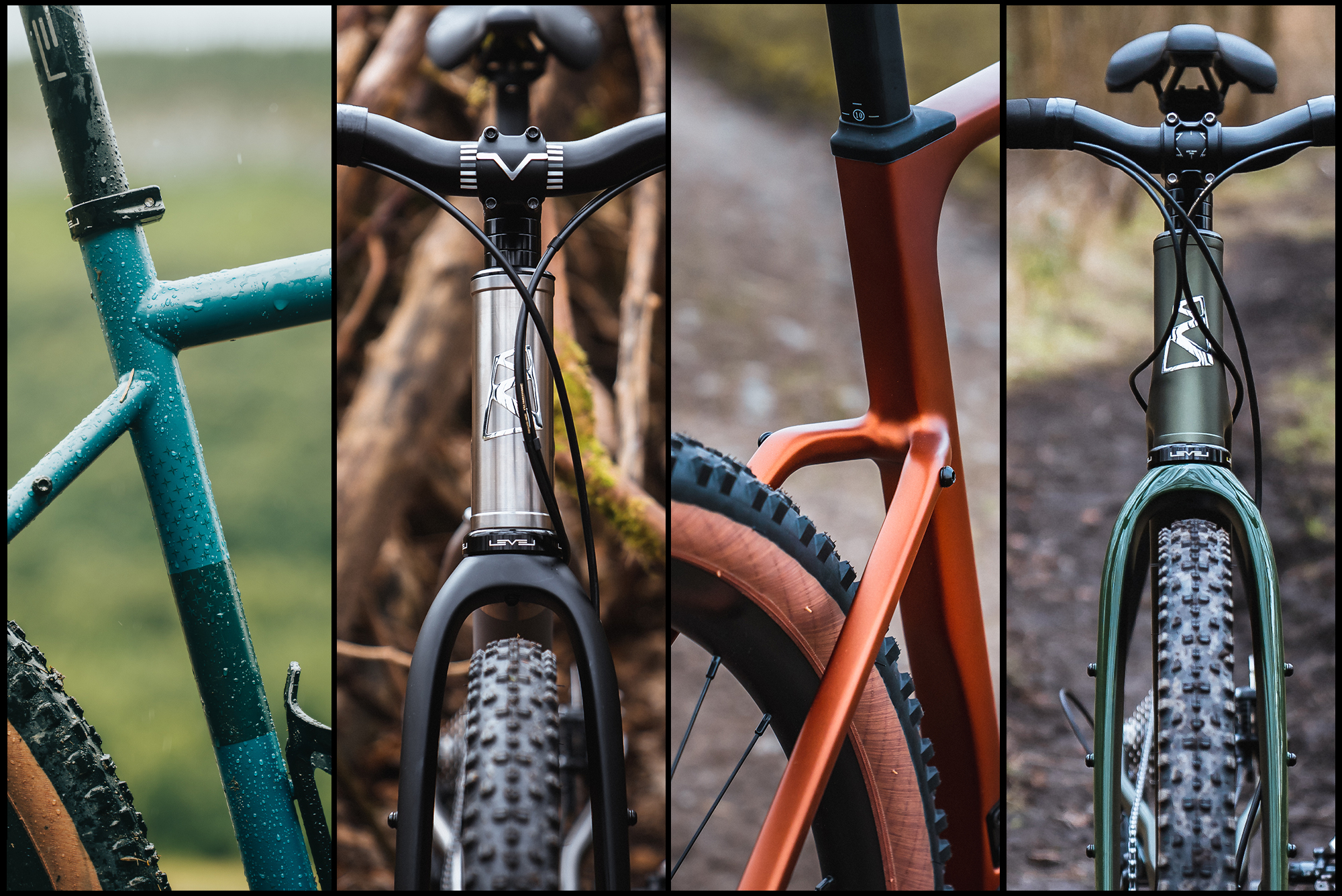
-
More cyclists than ever are seizing the opportunity to take their rides off-piste in search of freedom and adventure. But to do so, you need the right tool for the job - a gravel bike. The Ribble gravel range consists of four models in a variety of frame materials. Each of these offers something a little different in terms of ride quality, longevity and performance characteristics. So how do you decide which frame material is right for you?
Since the advent of the modern bicycle and deep into the 20th century, there was only ever one choice when it came to frame building - steel. This status quo was irrevocably altered in the latter stages of the century, with the advent of carbon, titanium and aluminium framesets. Fast forward to today, and there is a veritable cornucopia of choice when it comes to selecting the frame material for your new bike.
So, when faced with such a choice, how do you go about deciding which frame material is right for you? And what key differences do these materials offer when buying a bike?
-
What exactly are gravel bikes?
-
Firstly we should address what exactly constitutes a gravel bike. It would be easy to say that a gravel bike is just a normal road bike but with clearance for wider tyres. However, this would be wrong. The differences may be subtle but they exist nonetheless. Yes, a Gravel bike retains the same distinctive drop handlebar design as a road bike. Yet it also gains a geometry more akin to that of a modern mountain bike and a tyre clearance that's infinitely better suited to off-road excursions.
Gravel bikes allow you to head off-grid in search of adventure. Exploring previously inaccessible routes that could only have been reached by mountain bike. So why not get a mountain bike, you may ask? While Mtbs may be superior for breakneck steep descents and ultra-technical terrain, they are much less efficient when it comes to hardpack and paved surfaces.
Ever tried riding a full susser on tarmac? It's not a lot of fun. The geometry, tyre clearance and easy pedalling action of a gravel bike make them much better suited to transitioning between terrains. Riding them, you can link beat-up backroads with forest trails, bridleways, towpaths and gravel tracks for even more variety.
-
The Ribble Gravel Range
-
Ribble gravel bikes, also known as adventure bikes, are equipped with a multitude of mounting points, so you can outfit your ride with as many bottles, bags and racks as you like. This ensures that you never have to leave any of those essentials behind when it's time to load up for that bike-packing expedition of a lifetime.
The Ribble Gravel line-up encompasses four models manufactured from different frame materials. Each of these offers different depending on what you want from the frame in terms of weight, performance and ride characteristics.
But how do you go about deciding which frame material is right for you? We examine the range below and highlight what properties each material offers.
-
Gravel 725
-
The latest addition to Ribble's gravel lineup is the Gravel 725. It melds the traditional ride comfort of steel with contemporary design features to deliver a bike with classic aesthetics but distinctly modern performance characteristics. The frame is hand-assembled from high-quality Reynolds 725 steel tubing.
Reynolds is one of the world's oldest and most respected tube manufacturers in the cycling world. And has been producing high-quality steel tubing in its Birmingham factory since 1897. The material itself is very supple, which provides it with the natural vibration-absorbing property that is so cherished among the cycling fraternity.
The Reynolds 725 tubing that we use is heat-treated and tig-welded to form an immensely robust frameset capable of handling the rigours of multi-terrain riding.
- Strength: Steel is incredibly strong and isn't prone to fatigue while being highly resistant to dents in the event of a crash or accidental damage.
- Weight: While not as light as its carbon, alloy or titanium sibling, the Gravel 725's ride quality lets you sit in the saddle and just roll over the terrain with little fuss, maximum comfort and total satisfaction.
- Durability: Another area where steel wins out is durability. The high-quality Reynolds 725 steel tubing used to create the Gravel 725 can last a lifetime. As long as its care and maintenance are adequate, of course.
- Comfort: Similarly to titanium, steel is very supple, which lends itself to long-haul comfort. Its forgiving nature helps absorb the lumps and bumps, reducing rider fatigue through vibration reduction.
-
Gravel AL e
-
The electric member of the Ribble Gravel family, the Gravel AL e delivers up to 250W of natural-feeling power assistance to each pedal stroke. The frame is constructed from lightweight yet robust 6061-T6 aluminium. Each section of double-butted tubing is tig welded and heat-treated to create a frameset that is incredibly strong and stiff.
- Stiffness: Aluminium is less dense than steel, allowing tube wall thickness to be altered to make an impressively light frame that's also super-stiff. This increased stiffness allows you to lay down the power with little wasted effort.
- Weight: Second only to carbon, aluminium is a great choice for those who want the lightest bike possible.
- Durability: More durable than carbon yet less so than titanium or steel. Alloy frames occupy the middle ground when it comes to long-term durability.
- Comfort: Early alloy frames were uncomfortable, but the dropped seat stay geometry and generous tyre clearance soften up the ride for improved rider comfort.
- Dropped Seatstays: A feature the Gravel AL e shares with all frames in our range is the dropped seatstay geometry. Moving the stays further down the seat tube leads to increased vertical compliance. This allows the seat post and seat tube to flex in unison to enhance vibration absorption.
-
Gravel SL
-
The Gravel SL features a carbon monocoque construction derived from our Endurance carbon series of road frames. In a similar vein to these frames, it's the bespoke blend of Toray T1000 and T800 carbon fibres that gives the Gravel SL the edge. These fibres are layered to an exact specification over an EPS inner core using advanced carbon mould technology.
The EPS inner core system we use during the manufacturing process eliminates any excess material inside the frame. Thus preventing any weak spots during construction and ensuring complete structural consistency is achieved throughout. In layman's terms, the inside of the frame is completely smooth with zero imperfections.
The technique described allows us to produce an extremely high stiffness-to-weight ratio frame. Simply put, the Gravel SL is the lightest, fastest, and most agile bike in the gravel range.
- Weight: The lightest of the framesets in the gravel line-up. The Gravel SL's ultra-lightweight construction requires less effort to propel it, which proves particularly advantageous when climbing or sprinting.
- Strength: A bespoke blend of Toray T1000 & T800 carbon fibres imbues the Gravel SL with an exceptionally high strength-to-weight ratio.
- Durability: As long as you don't suffer heavy crashes or impacts, carbon frames can last for many years.
- Stiffness: The Gravel SL's advanced carbon monocoque construction is incredibly resistant to lateral and torsional flex. This increased stiffness enhances the power transfer, allowing you to drop the hammer on gravel and carry the fastest speeds over varied terrain.
- Comfort: Carbon frames are adept at absorbing vibrations from rough surfaces, though not quite to the same degree as titanium and steel.
-
Gravel Ti
-
Often referred to as the dream material, titanium is the most coveted of all frame materials. Its attraction lies in the comfortable ride quality it offers combined with durability beyond compare. Like steel, titanium has exceptional vibration-damping properties, resulting in a smooth ride over rough and rutted terrain.
In terms of the ride, there's little to separate the Gravel Ti from the Gravel 725. Both retain the same compliant ride quality, yet titanium is lighter and isn't susceptible to any form of fatigue. In fact, titanium's air of indestructibility has led to it being rightly touted as a 'bike for life'.
- Strength: Titanium has the highest strength-to-weight ratio of any naturally occurring metal. Making it the most resilient frame material around.
- Weight: The frame is lighter than steel, affording you a comfortable, compliant ride that feels much the same but delivers more speed for less effort.
- Durability: A high-quality titanium frame can last you a lifetime...literally. Titanium does not degrade, corrode or fatigue in any way. It will also shrug off accidental impacts or crash damage that may result in any other frame being written off.
- Comfort: Similarly to steel, titanium has a natural spring-like quality that translates into enhanced vibration absorption (compliance). In terms of 'ride feel', you experience a forgiving ride while feeling less fatigue than you would on a much stiffer frame.
-
Gravel AL
-
Contrary to popular belief, no frame can truly be described as being made entirely of 'aluminium'. This is because aluminium is too soft a material to fulfil its intended purpose. So it's mixed with various other elements to alter its physical properties. The Gravel AL is constructed from 6061-T6 alloy and heat-treated to ensure a robust frameset that can take a pounding from the roughest terrain.
- Strength: The Gravel AL is almost as stiff as the Gravel SL carbon model and just as strong.
- Weight: Second only to carbon, aluminium is the ideal choice for the rider who wants the lightest possible gravel bike but has a more modest budget.
- Durability: The 6061-T6 frame is extremely strong and durable. However, it doesn't offer the extended lifespan of titanium or steel. But if its care and maintenance are up to scratch, an alloy bike can last many years.
- Comfort: Similarly to its carbon sibling, the alloy frame is incredibly stiff, making it fast and agile. Dropped seat stay technology and increased frame clearance for big-volume tyres soften the ride, ensuring vibrations from rough surfaces are not transmitted directly to the rider.
-
In summary
-
Which frame material you choose is based entirely on what you require from the bike. If you are looking for the fastest, lightest and most agile of gravel bikes to bullet along trails are heart-pumping speeds, the Gravel SL, Gravel AL, or Gravel AL e are the premium choices.
Those seeking long-haul comfort should seek out the vibration-damping capabilities of the Gravel Ti or Gravel 725. They may not be as fast or as agile as their carbon/alloy siblings. But if your idea of fun is sitting in the saddle, rolling along and taking in the wonder of nature, these make perfect sense.
-
-
How does the choice of material affect the ride? Who better to provide the answers to these questions than the folks at Global Cycle Network (GCN). GCN's test ride to find out more.
How do you qualify for the Gravel World Championships after only one gravel race? Check out Ribble Showroom assistant Metheven's incredible story to find out more.
Need help deciding which gravel bike suits you best? Discover the Ribble gravel range in our guide.
